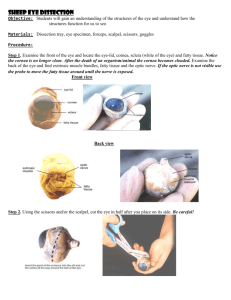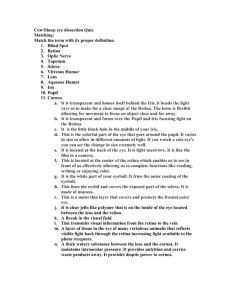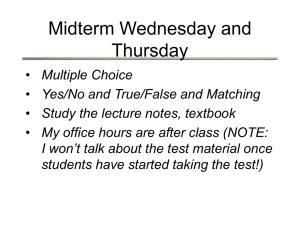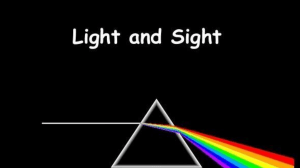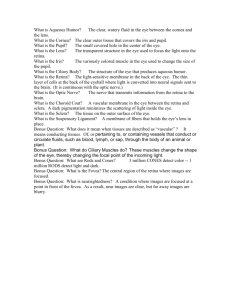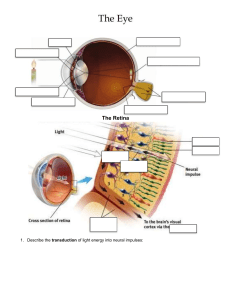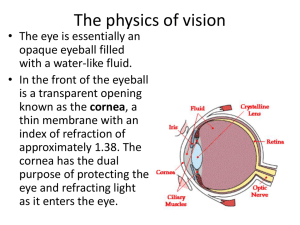Eyes - American Academy
advertisement
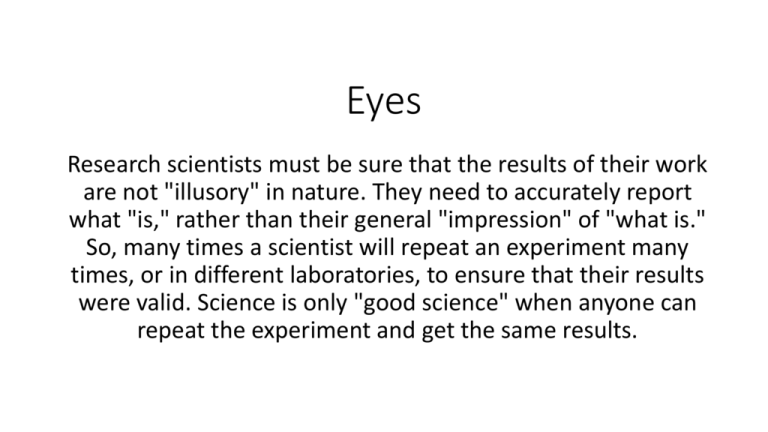
Eyes Research scientists must be sure that the results of their work are not "illusory" in nature. They need to accurately report what "is," rather than their general "impression" of "what is." So, many times a scientist will repeat an experiment many times, or in different laboratories, to ensure that their results were valid. Science is only "good science" when anyone can repeat the experiment and get the same results. Fact of the day… Right or left eye dominant… Test to see Bill Nye… http://www.youtube.com/watch?v=cFVbLnXWn6A Optical Illusions… Illudere: to mock How Does The Eye Work? Eye Vocabulary eyeball: 2.5cm in diameter. If smaller, you will be farsighted, larger, than nearsighted sclera: the white of the eye, tendons attached to it, interior brown and grooved cornea: clear bulging surface in front of the eye, main refractive surface of the eye iris: the eye color pupil: hole through which light passes lens: made of proteins and water, consists of layers, transparent body enclosed in elastic capsule ciliary muscle: muscle that contracts and relaxes to focus in on the moon or to read aqueous humor: water-like fluid that provides the cornea and lens with oxygen and nutrients conjuctiva: the eye’s first defense against infection. It helps to lubricate the eye. Inflammation of this is called “pink eye” macula: this part of the retina gives us 20/20 vision, without it, we would be legally blind (color and fine central vision) orbital muscles: six muscles in charge of eye movement. Defects in the nerves cause Nystagmus/Amblyopia (lazy eye) retina: the film of the eye, converts light rays into electrical signals. Responsible for peripheral vision as well Eyes are complex sensory organs. A clear membrane called the cornea protects the eye but lets light through. Light enters an opening called the pupil. The light then travels through the lens and hits the retina at the back of the eye. The retina contains neurons called photoreceptors that sense light. When light hits a photoreceptor, it sends electrical impulses to the brain. The brain interprets these impulses as light. The retina has two kinds of photoreceptors: rods and cones. Rods are very sensitive to dim light. They are important for night vision and for seeing in black and white. Cones are very sensitive to bright light. They let you see colors and fine details.

